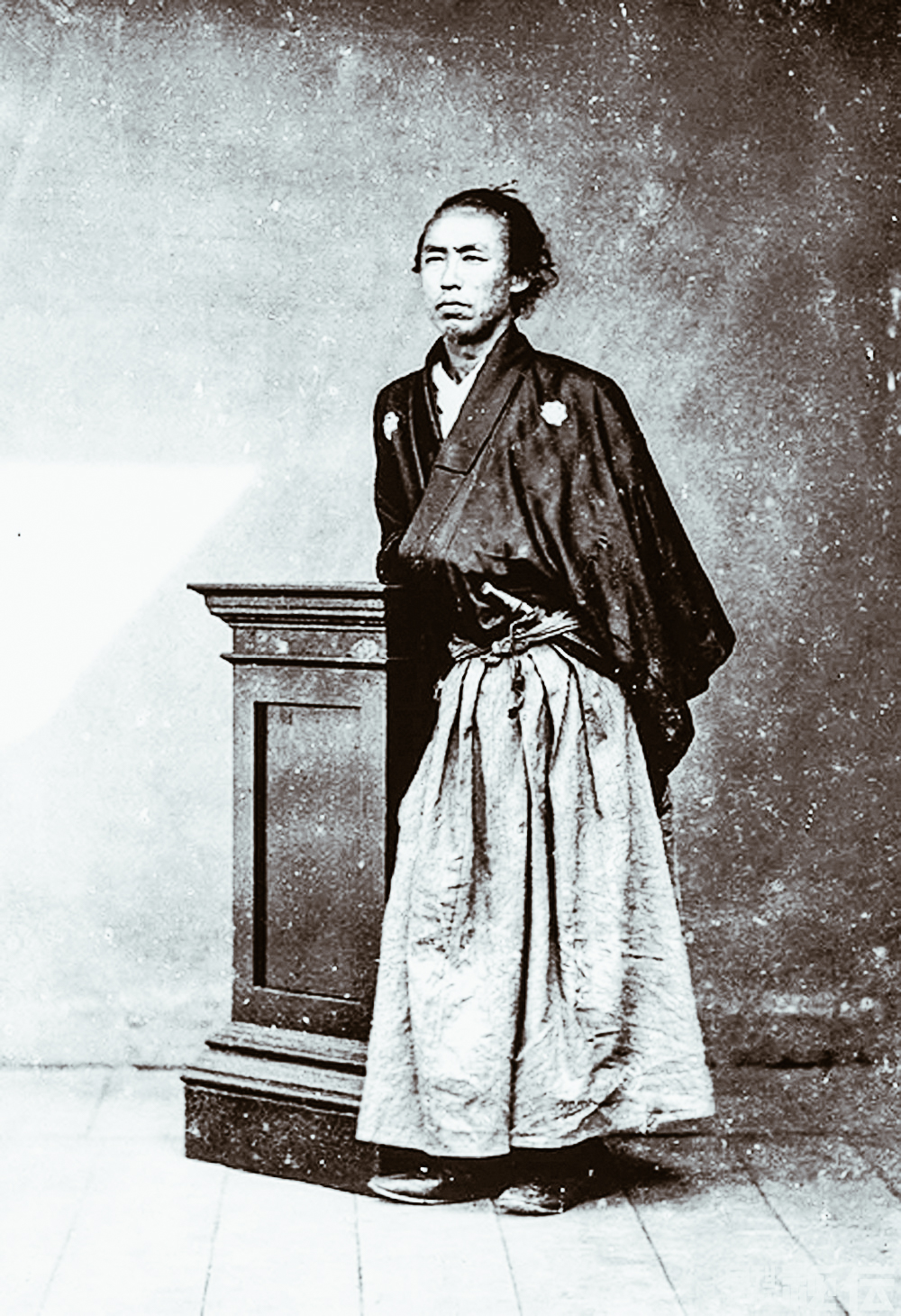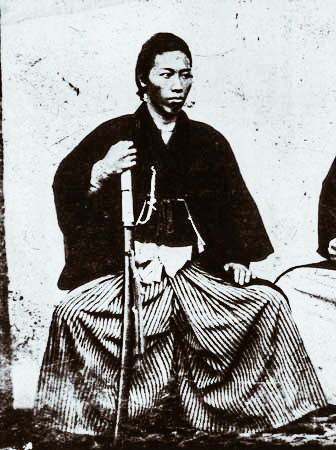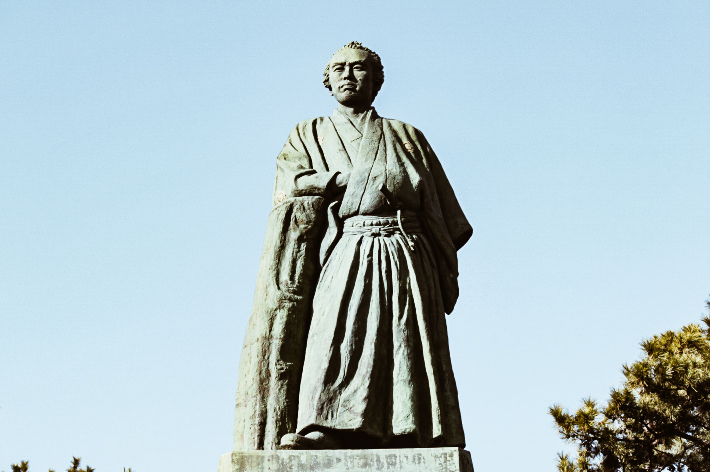Japan History: Sakamoto Ryōma
Sakamoto Ryōma (January 3, 1836 – December 10, 1867) is still recognized as one of the most important figures of the Tokugawa Shogunate and one of the greatest heroes of the Edo period.

photo credits: budojapan.com
Early youth
He was born on the island of Shikoku, in the Tosa Han (toda’s Kōchi Prefecture) on the fifteenth day of the eleventh month of Tenpō according to the Japanese calendar. His family was famous for being a great sake producer, thus obtaining the lowest rank of the Samurai category, the Gōshi (Samurai of the countryside). Tosa had a very clear separation between Joshi (high-ranking samurai) and Kashi (low-ranking samurai). Even in Sakamoto Ryōma’s generation, the samurai degree of his family remained Kashi. At the age of twelve, Ryōma was enrolled in a private school, but it didn’t last long, because his inclination to studies wasn’t very strong.
Thanks to his older sister, he then enrolled in the Oguri-Ryu fencing classes when he was 14, after being bullied at school. In adulthood, he was a master swordsman. In 1853 he was allowed by his clan to go to Edo to improve his skills as a swordsman. There he enrolled as a student at Hokushin Ittō-ryū Hyōhō Chiba-Dōjō, where he received his diploma. He then became Shihan at Chiba-Dōjō and taught Kenjutsu to students along with Chiba Jūtarō Kazutane, his close friend. In 1858 he returned to Kōchi. However, four years later the Commodore Perry of the United States arrived with a fleet to force Japan out of its centuries-old policy of national isolation. In the same year, movements against foreigners, anti-Tokugawa movements and in support of the Emperor began to form.

photo credits: jref.com
Sakamoto Ryōma and Takechi Hanpeita
His friend, Takechi Hanpeita (or Takechi Zuizan), organized Tosa’s Loyalist Party “Kinnoto”. Their political slogan was “Revere the emperor, expel the barbarians”. The group consisted of about 2000 samurai, mostly of lower rank, who insisted on the reform of Tosa’s government. As the group was not recognized, they began a plot to assassinate Yoshida Toyo, head of the Tosa domain. Ryōma participated in the plot without really supporting it.
Takechi asked for a revolution only for the Tosa clan, and Ryōma thought they would have to do something for all of Japan instead. He decided to leave Tosa and part with Takechi. In those days, no one was allowed to leave their clan without permission, on pain of death. One of Ryōma’s sisters committed suicide precisely because of her brother’s behavior.
In 1864, when the Tokugawa shogunate began to take a hard line, Ryōma fled to Kagoshima in the Satsuma Domain, under development as the main center for the anti-Tokugawa movement. Ryōma negotiated the secret alliance between the provinces of Chōshū and Satsuma. Satsuma and Chōshū were historically irreconcilable enemies, and Ryōma’s position was seen as “neutral outsider”.
Sakamoto Ryōma and the West
Ryōma was an admirer of democratic principles and studied the United States Congress and the British Parliament a lot. He loved these concepts so much that he took them as a model for the government of Japan after the Restoration.
Ryōma wrote the “Eight Proposals During the Expedition” while discussing the future model of the Japanese government with Gotō Shōjirō aboard a Tosa ship outside Nagasaki in 1867. Ryōma stressed the need for a democratically elected bicameral legislature and the drafting of a Constitution. Furthermore, he had considered the formation of a national army and fleet together with the regulation of gold and silver exchange rates. It is believed that Ryōma’s proposals form the basis for the subsequent parliamentary system implemented after his death.
Sakamoto Ryōma and the Bakumatsu period
Ryōma pushed for national reform and left the domain, targeting Katsu Kaishu, a senior Tokugawa official.
When he finally managed to find his target, the latter calmly asked to be heard before he was killed. Katsu Kaishu then explained his plans to increase Japan’s military strength through modernization and westernization. Instead of killing him as the plans were, Ryoma became his assistant. Together they created a naval force to be reckoned with.
Ryōma is often considered the “father of the Japanese Imperial Navy” because under the direction of Katsu Kaishū he worked to create a modern naval force. All this to allow Satsuma and Chōshū to stand comparison with the naval forces of the Tokugawa shogunate. Ryōma founded the private navy and the Kameyama Shachū trading company in the city of Nagasaki with the help of Satsuma.

photo credits: visitkochijapan.com
Chōshū’s subsequent victory over the Tokugawa army in 1866 and the imminent collapse of the Tokugawa shogunate made Ryōma a precious figure for his former masters in Tosa. In fact, it is precisely in this period that he was recalled to Kōchi with many honors. Tosa’s domain was anxious to get a negotiated agreement between the Shogun and the Emperor. This would have prevented Satchō’s powerful Alliance from forcibly toppling Tokugawa and thus emerging as a new dominant force in the government of Japan. Ryōma again played a crucial role in the negotiations that led to the voluntary resignation of the Tokugawa Yoshinobu Shogun in 1867. With the arrival of the Meiji Restoration, thanks to Sakamoto Ryoma the Shogunate fell. Thus it was that Japan managed to come out of the 260-year Tokugawa Rule.
Ryōma often used the alias Saitani Umetarō (谷梅太郎) as he was often hunted by Bakufu supporters, like Shinsengumi members.
Sakamoto Ryōma’s murder
On the night of December 10, 1867, Sakamoto Ryōma and his friend Nakaoka Shintaro stayed at the Omiya Inn in Kyoto. A group of assassins had gathered outside the inn. When one of them knocked on the door killing Ryōma’s bodyguard, the rest of the group reached his room assassinating both him and Nakaoka.
The killers were never identified. However, members of the Shinsengumi and their leader Kondo Isami were accused and executed for the murder. Although the Mimawarigumi, members of the pro-Tokugawa group, confessed to the murder in 1870, no action was ever taken against them.
Sakamoto Ryōma’s ultimate goal was not personal, but for the sake of Japan. His actions and beliefs have made him a national hero to this day.
Ryōma was a visionary who dreamed of an independent Japan without feudal traps. He was inspired by the example of the United States where “all men are created equal”. He realized that to compete with an industrially and technologically advanced outside world, the Japanese had to modernize. It has also been seen as an intriguing mix of tradition and modernity. In fact, a symbol of these traits was his preference for the samurai dress with western footwear.

photo credits: tokyo2020.jp
Modern times
On 15 November 2003, the Kōchi airport was renamed Kōchi Ryōma Airport in his honor.
There is a Sakamoto Ryōma Memorial Museum (坂本龍馬記念館) south of Kōchi, with a large bronze statue of Ryoma overlooking the sea. The city of Kōchi has a number of Ryōma-themed attractions and places, including the Sakamoto Ryōma Birthplace Memorial. Furthermore, the Sakomoto Ryōma Hometown Museum shows the Kōchi center during Ryōma’s childhood, including the relevant aspects that may have influenced his opinions. On November 15, 2009, the Hokkaido Sakamoto Ryōma memorial museum was built in Hakodate, Hokkaido.
Share this:
- Click to share on Facebook (Opens in new window)
- Click to share on Twitter (Opens in new window)
- Click to share on Tumblr (Opens in new window)
- Click to share on Pinterest (Opens in new window)
- Click to share on Telegram (Opens in new window)
- Click to share on WhatsApp (Opens in new window)
- Click to share on Reddit (Opens in new window)
- Click to print (Opens in new window)






